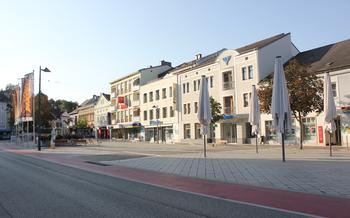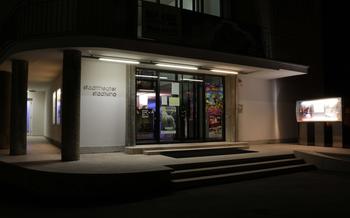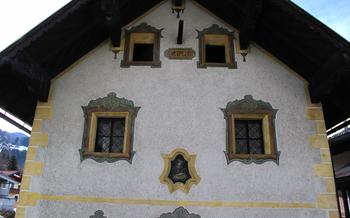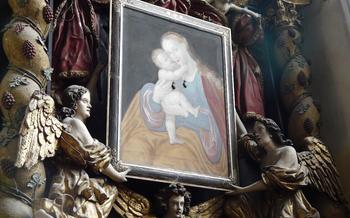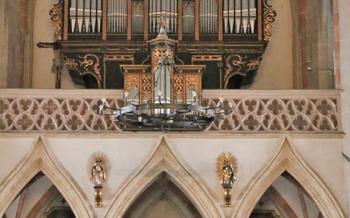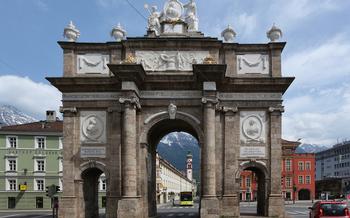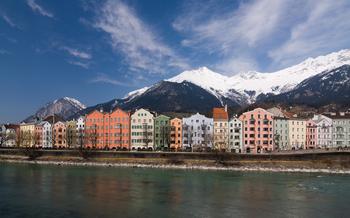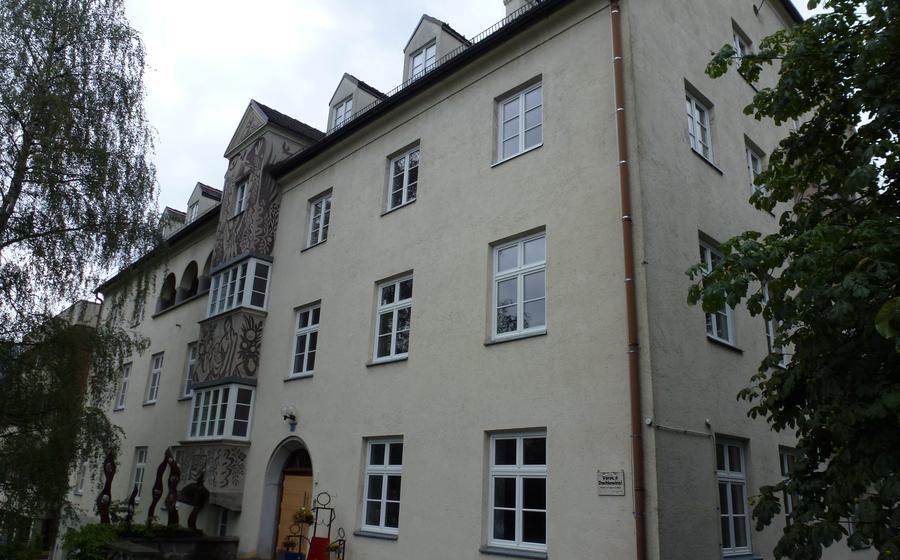
Wieskirche Pilgrimage Church
- The Wieskirche Pilgrimage Church: A Stunning Masterpiece
- A Journey Through History: Exploring the Wieskirche's Past
- Unveiling the Church's Architectural Marvels
- Stepping Inside the Wieskirche: A Realm of Divine Beauty
- A Pilgrimage Destination with a Rich Tradition
- Immerse Yourself in the Wieskirche Experience: Practical Tips for Visitors
- Discover the Wieskirche's Hidden Gems: Off-the-Beaten-Path Experiences
- Immerse Yourself in the Art and History of the Wieskirche
- Capture the Essence of the Wieskirche: Photography Tips and Techniques
- The Wieskirche Beyond Religion: A Cultural and Historical Landmark
- Wieskirche's Legacy: A Source of Inspiration and Admiration
- Local Legends and Folklore Surrounding the Wieskirche
- The Wieskirche's Contribution to the Local Economy and Tourism
- Insider Tip: Explore the Wieskirche at Dawn or Dusk
The Wieskirche Pilgrimage Church: A Stunning Masterpiece
Nestled amidst the picturesque Bavarian countryside, the Wieskirche Pilgrimage Church stands as a testament to the power of faith, artistic genius, and architectural brilliance. Constructed in the 18th century, this UNESCO World Heritage Site has captivated hearts and minds with its unique design, intricate details, and spiritual significance.
The Wieskirche owes its existence to the miraculous events surrounding the discovery of a wooden statue of the Scourged Christ in a nearby field. As news of the statue's miraculous powers spread, pilgrims from all corners of the region flocked to the site, seeking healing and spiritual guidance. The construction of the Wieskirche was undertaken to accommodate the growing number of pilgrims and to provide a fitting setting for the veneration of the sacred statue.
Designed by the renowned architect Dominikus Zimmermann, the Wieskirche is a masterpiece of Baroque and Rococo styles. Its oval-shaped nave, adorned with intricate carvings and frescoes, creates a sense of intimacy and awe. The church's interior is a symphony of gold, with shimmering altars, statues, and pulpit that reflect the divine light. The unity of architecture, art, and spirituality makes the Wieskirche a truly exceptional creation, leaving an indelible mark on visitors who step within its sacred walls.
A Journey Through History: Exploring the Wieskirche's Past
The Wieskirche Pilgrimage Church's story is deeply intertwined with tales of miracles, divine intervention, and the unwavering faith of the local community. Legend has it that in 1738, a local shepherd boy named Alois Linder witnessed an apparition of the Virgin Mary while tending his flock on the Wies meadows. Inspired by this miraculous event, the community decided to build a chapel on the site. However, as the number of pilgrims seeking blessings grew, the humble chapel could no longer accommodate the influx of visitors.
Enter Dominikus Zimmermann, a renowned architect and master builder who was commissioned to design a new church that would reflect the grandeur of the occasion. Zimmermann, known for his innovative approach to architecture, poured his heart and soul into creating a masterpiece that would stand the test of time. The result was the Wieskirche Pilgrimage Church, a testament to Zimmermann's genius and the unwavering faith of the Steingaden community.
The Wieskirche's construction was a monumental undertaking, completed in just two years between 1745 and 174The church quickly became a symbol of hope and devotion for the local community, particularly during challenging times such as wars and epidemics. Its reputation as a place of pilgrimage spread far and wide, attracting believers from all corners of Europe who sought solace, healing, and spiritual guidance within its sacred walls.
Unveiling the Church's Architectural Marvels
The Wieskirche stands as a testament to the architectural genius of Dominikus Zimmermann, showcasing a harmonious blend of Baroque and Rococo styles. The unique oval shape of the church's nave creates a sense of intimacy and encourages a closer connection between the congregation and the altar. The intricate carvings and frescoes adorning the facade depict scenes from the life of Christ and the Virgin Mary, adding a layer of visual narrative to the church's exterior.
The impressive dome, a defining feature of the Wieskirche, rises majestically above the nave. Its stunning ceiling paintings, executed by the renowned artist Matthäus Günther, depict the Assumption of the Virgin Mary into Heaven. The vibrant colors and dynamic composition of these frescoes create an awe-inspiring spectacle, drawing the eyes upwards and instilling a sense of wonder in the beholder.
The harmonious interplay of architectural elements, from the delicate stucco work to the ornate altars and pulpit, showcases the exceptional craftsmanship and attention to detail that went into the construction of the Wieskirche. Every corner of the church reveals a new treasure, inviting visitors to embark on a journey of discovery and appreciation for the artistic mastery that brought this architectural masterpiece to life.
Stepping Inside the Wieskirche: A Realm of Divine Beauty
As you step through the grand entrance of the Wieskirche, a radiant golden glow envelops you, illuminating the intricate details of its opulent interior. The walls are adorned with exquisite wood carvings and statues, each one a testament to the skill and artistry of the Baroque era. The intricate altars and pulpit, crafted with meticulous precision, showcase the finest craftsmanship.
The sense of awe and serenity that permeates the space is palpable. The harmonious blend of Baroque and Rococo styles creates a symphony of visual delight, drawing your gaze upward to the impressive dome. The stunning ceiling paintings, depicting scenes from the life of Christ, seem to come alive in the flickering candlelight, adding to the magical ambiance.
Every corner of the Wieskirche reveals a new treasure, from the intricate carvings on the pews to the delicate stained glass windows that bathe the interior in a kaleidoscope of colors. It is a space that invites contemplation and reflection, a place where the divine and the earthly intertwine.
As you wander through the church, take a moment to pause and soak in the beauty that surrounds you. Let the serenity of the space wash over you, allowing your mind to find solace and peace amidst the grandeur of this sacred place.
A Pilgrimage Destination with a Rich Tradition
The Wieskirche has a long and storied tradition as a pilgrimage destination. For centuries, people from all walks of life have made their way to this sacred site, seeking solace, guidance, and healing. The church's reputation for miracles and answered prayers has spread far and wide, attracting a steady stream of pilgrims throughout the year.
The annual pilgrimage season, which runs from April to October, is a particularly special time at the Wieskirche. During this period, the church welcomes thousands of visitors from around the world. Many of these pilgrims come to participate in the traditional processions and services that are held in honor of the Virgin Mary. The atmosphere during these events is truly electric, as the church fills with the sounds of prayer, song, and devotion.
The Wieskirche plays a vital role in fostering religious practices and traditions in the local community. It serves as a gathering place for the faithful, who come together to celebrate their shared beliefs and to seek spiritual guidance and support. The church also offers a variety of educational programs and events, which help to promote understanding and appreciation of the Christian faith.
Immerse Yourself in the Wieskirche Experience: Practical Tips for Visitors
Planning Your Visit:
Before embarking on your pilgrimage to the Wieskirche, ensure you plan your visit carefully. Guided tours are available, providing invaluable insights into the church's history and architecture. Check the operating hours to avoid disappointment and note any admission fees or donations required.
Getting to the Wieskirche:
Public transportation offers a convenient and eco-friendly way to reach the Wieskirche. Buses and trains connect major cities and towns to the pilgrimage site. Ample parking facilities are available for those arriving by car.
Things to Bring:
To fully appreciate the Wieskirche's splendor, consider bringing a camera to capture its intricate details. Comfortable shoes are essential for navigating the church's grounds. Dress appropriately, respecting the sacred nature of the site.
Respecting the Sanctity of the Church:
As you explore the Wieskirche, maintain a respectful silence, mindful of the ongoing devotions and prayers. Follow any guidelines or instructions provided to ensure a peaceful and harmonious environment.
Discover the Wieskirche's Hidden Gems: Off-the-Beaten-Path Experiences
Beyond the awe-inspiring church, the surrounding area offers a delightful blend of history, nature, and local charm. Take a leisurely stroll through the quaint village of Steingaden, where you can admire historic buildings, charming cafes, and art galleries. Immerse yourself in the rich history of the Wieskirche at the nearby Wieskirche Museum, which houses fascinating exhibits on the church's construction, design, and cultural significance. For a refreshing change of pace, embark on a scenic bike ride or hike through the picturesque Bavarian countryside, surrounded by rolling hills, lush forests, and serene lakes. Don't miss the opportunity to indulge in the region's culinary delights at local restaurants, where you can savor traditional Bavarian dishes and soak up the warm hospitality of the local people.
Immerse Yourself in the Art and History of the Wieskirche
To fully appreciate the Wieskirche's significance, delving into its history and art is essential. Guided tours conducted by knowledgeable experts offer an in-depth understanding of the church's architecture, symbolism, and religious significance. These tours provide insights into the minds of the masterminds behind its creation, Dominikus Zimmermann and Johann Baptist Zimmermann.
Complement your visit by exploring the Wieskirche Museum, located just a short walk from the church. This museum houses a collection of artifacts, models, and interactive exhibits that provide a deeper dive into the church's history, construction, and cultural impact. Learn about the techniques and materials used in its creation, the challenges faced by the builders, and the enduring legacy of this architectural masterpiece.
For an immersive experience, attend one of the concerts or events held within the Wieskirche. The church's exceptional acoustics make it an ideal venue for musical performances, ranging from classical concerts to contemporary compositions. Listening to music within this sacred space adds another dimension to your Wieskirche experience, allowing you to appreciate its beauty through the power of sound.
Consider participating in workshops or classes offered by local artisans or historians. These sessions provide hands-on opportunities to learn about the techniques used in the creation of the Wieskirche's intricate carvings, frescoes, and other decorative elements. By engaging in these activities, you gain a deeper appreciation for the craftsmanship and artistry that went into this magnificent work of art.
Capture the Essence of the Wieskirche: Photography Tips and Techniques
To truly capture the essence of the Wieskirche, photography enthusiasts should come prepared with the right techniques and equipment. The church's stunning interior, with its intricate details and radiant golden glow, presents a unique challenge for photographers.
Natural light plays a crucial role in showcasing the church's vibrant colors and textures. Plan your visit during the day to take advantage of the soft, diffused light that filters through the windows. Experiment with different angles and perspectives to capture the grandeur of the architecture and the symmetry of the nave.
Composition is key to conveying the church's unique character. Utilize leading lines, such as the rows of pews or the arches of the ceiling, to draw the viewer's eye into the image. Experiment with depth of field to create a sense of depth and dimension.
Don't be afraid to get creative with your shots. Try capturing details like the intricate carvings on the pulpit or the delicate frescoes adorning the walls. Experiment with different shutter speeds to convey a sense of movement or stillness.
Once you've captured your shots, don't forget to share them with others! Post your photos on social media or create a blog post about your experience at the Wieskirche. Share the beauty of this architectural masterpiece with the world and inspire others to visit this incredible destination.
The Wieskirche Beyond Religion: A Cultural and Historical Landmark
The Wieskirche transcends its religious significance to become a cultural and historical landmark of immense value. Its architectural brilliance exemplifies the German Baroque style, characterized by its intricate ornamentation, dynamic forms, and theatrical use of light. The church's design has greatly influenced the development of art and architecture in the region, inspiring subsequent generations of architects and artists.
Recognizing its exceptional universal value, UNESCO designated the Wieskirche as a World Heritage Site in 198This prestigious accolade underscores the church's importance as a cultural treasure of global significance. Ongoing conservation efforts are dedicated to preserving its heritage for future generations, ensuring that this architectural masterpiece continues to captivate and inspire.
The Wieskirche stands as a testament to the enduring power of faith and devotion, transcending its religious function to become a symbol of hope and resilience in the face of adversity. Its legacy extends far beyond its spiritual significance, establishing it as a cultural and historical landmark that continues to attract visitors from around the world.
Wieskirche's Legacy: A Source of Inspiration and Admiration
The Wieskirche's influence extends far beyond its immediate surroundings. Its unique architectural style and intricate details have inspired generations of architects and artists, leaving an indelible mark on the history of art and architecture. The church's enduring popularity as a tourist destination and a UNESCO World Heritage Site is a testament to its universal appeal and significance.
Scholars and researchers continue to delve into the history, symbolism, and construction techniques of the Wieskirche, contributing to a deeper understanding of its importance. The church's enduring legacy is evident in the ongoing efforts to preserve and restore it, ensuring that its beauty and significance can be appreciated by future generations.
The Wieskirche stands as a symbol of hope and resilience in the face of adversity. Despite the challenges it has faced over the centuries, including wars, fires, and natural disasters, the church has persevered, serving as a beacon of faith and inspiration for countless individuals. Its enduring legacy reminds us of the power of human creativity, devotion, and the enduring impact of architectural masterpieces.
Local Legends and Folklore Surrounding the Wieskirche
The Wieskirche is steeped in local legends and folklore that have been passed down through generations, adding to its mystical aura. The most prevalent tale is that of the shepherd boy, Joseph Mohr, who witnessed the apparition of the Virgin Mary in 173The Virgin is said to have appeared to him while he was tending his sheep on the hillside, instructing him to build a chapel on that very spot. Mohr's account of the vision sparked the construction of the Wieskirche, which became a pilgrimage site for those seeking divine intervention and healing.
Another legend associated with the Wieskirche speaks of hidden treasures buried beneath the church grounds. It is said that during the tumultuous period of the Napoleonic Wars, local villagers secreted valuable possessions within the church's walls to protect them from plundering soldiers. The treasures were never recovered, and to this day, rumors persist about their whereabouts, adding an air of mystery to the Wieskirche.
Furthermore, the church is intertwined with local customs and traditions. The annual Wieskirche pilgrimage, held every year from May to October, attracts thousands of pilgrims and visitors who come to pay homage to the Virgin Mary and seek blessings. During the pilgrimage season, the village of Steingaden is transformed into a hub of religious festivities, with processions, markets, and cultural events taking place throughout the town.
The Wieskirche's Contribution to the Local Economy and Tourism
The Wieskirche Pilgrimage Church has played a significant role in boosting tourism in the Steingaden region and contributing to its local economy. Its status as a UNESCO World Heritage Site and its reputation as a stunning architectural masterpiece attract visitors from around the world, eager to witness its beauty and spiritual significance. The pilgrimage season, which runs from May to October, sees a surge in visitors who come to pay homage to the Virgin Mary and seek spiritual guidance. This influx of pilgrims and tourists provides a substantial source of revenue for local businesses, including hotels, restaurants, souvenir shops, and transportation services.
Moreover, the Wieskirche has spurred the development of tourism-related infrastructure and services, creating employment opportunities for the local community. Tour operators, guides, and artisans have established businesses catering to the needs of visitors, offering guided tours, workshops, and unique souvenirs inspired by the church's history and architecture. The economic benefits generated by tourism extend beyond the immediate vicinity of the church, positively impacting the entire region. The Wieskirche serves as a catalyst for economic growth, promoting cultural heritage, and fostering a sense of pride among the local population.
Insider Tip: Explore the Wieskirche at Dawn or Dusk
While the Wieskirche's beauty is undeniable at any time of day, there's something truly magical about visiting it at dawn or dusk. As the sun rises or sets, the church is bathed in a soft, golden light that seems to emanate from within. The intricate details of the facade and the surrounding landscape are illuminated in a way that's both ethereal and awe-inspiring.
At these special times of day, you'll also find fewer crowds, allowing you to experience the Wieskirche in a more serene and tranquil atmosphere. This can be especially beneficial if you're looking to capture unique photographs or simply soak in the church's beauty without distractions.
To make the most of your early morning or evening visit, plan to arrive at least 30 minutes before sunrise or sunset. This will give you ample time to find the best vantage point and set up your camera. If you're feeling adventurous, consider bringing a tripod to capture long-exposure shots of the church against the fading light of the sky.
Whether you're a photographer, a history buff, or simply someone seeking a spiritual experience, visiting the Wieskirche at dawn or dusk is an unforgettable way to connect with this iconic pilgrimage site. The beauty and tranquility of the surroundings will leave you with a lasting memory of your time in Steingaden.
